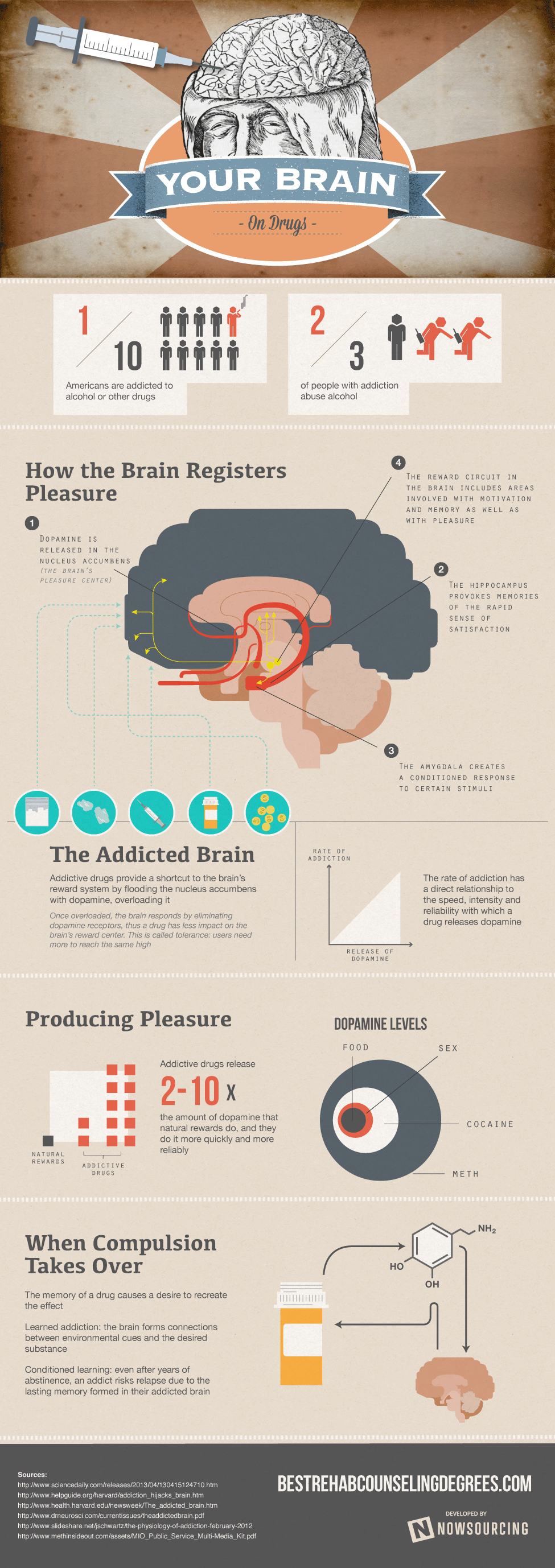Did you know that one in ten Americans struggle with alcohol or drug addiction, and two out of three people with addiction misuse alcohol? The brain responds to pleasure the same way, whether it comes from a drug, money, or sex. Let’s see how this works. Dopamine, a neurotransmitter, is released in the nucleus accumbens (often called the brain’s pleasure center), which is a group of nerve cells. The hippocampus stores memories of this quick sense of pleasure, while the amygdala forms a conditioned response to specific triggers. Dopamine then works with another neurotransmitter, glutamate, to influence the brain’s reward-based learning system.
The addicted brain becomes hooked—addictive drugs provide a shortcut to the brain’s reward system by flooding the nucleus accumbens with dopamine, overloading it. Once overloaded, however, the brain responds by eliminating dopamine reactors—the drug then has less of an impact on the brain’s reward center. This is called tolerance—users need more to reach the same high. Addictive drugs release 2-10 times the amount of dopamine that natural rewards do, and they do it more quickly and reliably. When compulsion takes over, the results can be ugly. Even after years of abstinence, an addict risks relapse due to the lasting memory formed in their addicted brain. This is a byproduct of conditioned learning.
To learn more about all this and what else happens when compulsion takes over, check out the infographic below.

Image source: www.bestrehabcounselingdegrees.com